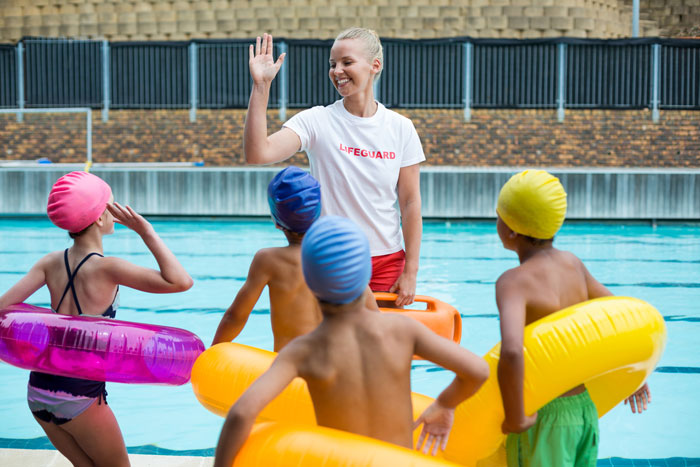Whether you’re planning for 2025 in general or thinking about the inevitable influx of lifeguard hiring in the spring, now is the time to review your current onboarding process. Although the Model Aquatic Health Code (MAHC) may not be required in your area, it can still be a great roadmap to planning critical training before a lifeguard takes the stand or you let a new leader take over on the pool deck.
What Is the Model Aquatic Health Code?
If you’re unfamiliar, the Model Aquatic Health Code is published by the Centers for Disease Control and Prevention (CDC). It’s a voluntary guideline designed to reduce risk at aquatic facilities, and, while it may not be required in your area, it could be considered an industry standard.
Pre-Service Training
In addition to onboarding new team members so that they understand your organization, their role within it, and have a basic understanding of your organization’s policies and procedures, pre-service training should be a key part of every new hire’s training. Pre-service should be included for any team member who is part of your safety team, including lifeguards, managers, and other key personnel who may respond to emergencies, and it should happen before their first shift (thus “pre-service”).
The MAHC and Lifeguard Pre-Service
MAHC section 6.3.3.3 specifically outlines the topics that should be covered, and the content for each of those topics can easily be created for your specific facility. It’s highly likely that you are already covering much of this content in your current onboarding, but the MAHC guidelines can help you organize and document that content in a way that helps reduce risk.
At the highest level, pre-service requirements include policies and procedures specific to your facility, demonstration of safety skills specific to the facility, and proper documentation including who attended and who conducted the training. Digging deeper, specific content should include:
- Safety team emergency action plan (EAP) training and skills proficiency, which includes training on staffing plan(s), emergency action plans, emergency closure procedures, and body fluid contamination response. New guards should also be able to demonstrate that they understand and can execute their role within those scenarios.
- Qualified lifeguards should also receive EAP training including zones of surveillance, rotations, minimum staffing plan, and rescue and First Aid response.
- Qualified lifeguards should also demonstrate skills proficiency. Lifeguards should be able to show you that they can: reach the maximum water depth at your facility; identify zones of surveillance; recognize a victim in their assigned zone, including being able to reach the furthest edge of their assigned zone within 20 seconds; complete rescue skills, including recognition and response to responsive, unresponsive, distressed or drowning swimmers, and extrication; demonstrate CPR and AED usage, and First Aid skills.
- Qualified lifeguards should also present current Lifeguard, CPR/AED, and First Aid certificates to be kept on file at the facility.
Next Steps
As you review your onboarding process—both for new hires and current guards who are taking shifts at a facility they’ve never worked before—take into consideration how you’ll manage each piece of the training. Whether that means creating additional collateral, scheduling more time, adding instructors to the training team, or adding training dollars to your budget (using the MAHC as justification for new budget requests), begin now to make an executable plan that will, ultimately, improve safety and reduce risk at your facility.
You can learn more about the MAHC on the CDC’s website, or visit the Council for the Model Aquatic Health Code website at www.cmahc.org. RM
ABOUT THE AUTHOR
Kirsten Barnes is assistant director of the Association of Aquatic Professionals. AOAP is a cutting-edge nonprofit with a mission to foster networking, education, advocacy and development opportunities for professionals across all areas of aquatics.



